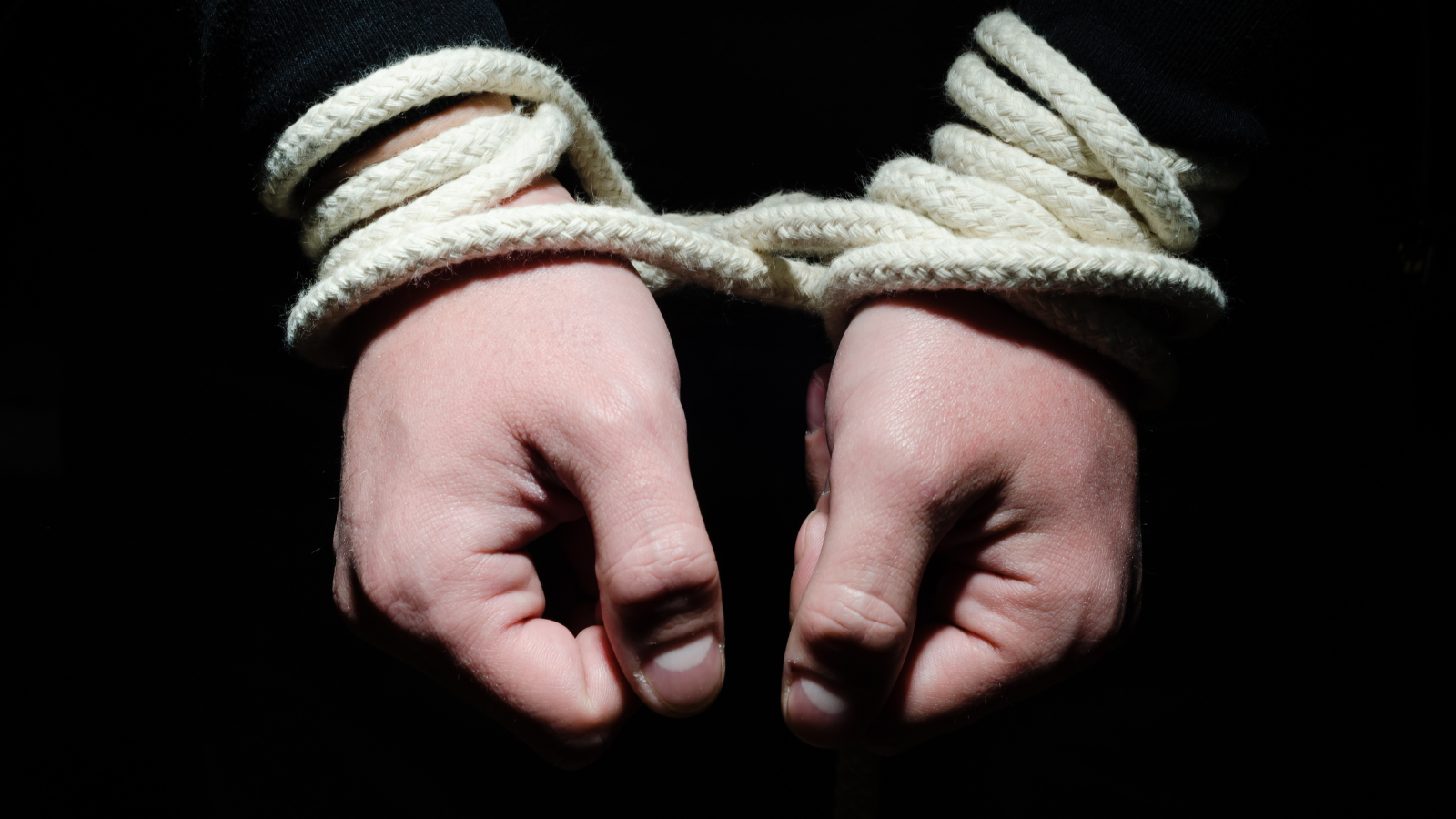Anyone who surveys this topic historically is struck by the fact that many thousands of Jews were captured and held for ransom throughout Jewish history and that Jewish communities went to extraordinary lengths to redeem captives.
Indeed, the Talmud (Bava Batra 8b) calls pidyon shvuyim a “mitzvah rabbah” (great mitzvah) and says that captivity is worse than starvation and death. Maimonides rules that he who ignores ransoming a captive is guilty of transgressing commandments such as “you shall not harden your heart” (Deuteronomy 15:7); “you shall not stand idly by the blood of your brother” (Leviticus 19:16); and “you shall love your neighbor as yourself” (Leviticus 19:18).
 And one who delays in ransoming a captive is considered like a murderer (Yoreh Deah 252:3). Indeed, Maimonides himself wrote letters exhorting his fellow Jews to redeem captives and collected money for pidyon shvuyim.
And one who delays in ransoming a captive is considered like a murderer (Yoreh Deah 252:3). Indeed, Maimonides himself wrote letters exhorting his fellow Jews to redeem captives and collected money for pidyon shvuyim.
The Exception to the Rule
It would seem from the above that pidyon shvuyim is an absolute mitzvah, which must be followed at all times. But there is one major exception, as explained in the Mishnah (Gittin 4:6 = Bavli Gittin 45a):
“One does not ransom captives for more than their value because of Tikkun Olam (literally: “fixing the world”; for the good order of the world; as a precaution for the general good) and one does not help captives escape because of Tikkun Olam.”
This Mishnah was codified by the standard codes of Jewish law. The Babylonian Talmud (ibid.) gives two different explanations for this takkanah (rabbinic enactment):
A) “because of the [financial] burden on the community”;
B) “so that they [=the robbers] should not seize more captives”–i.e., paying a high ransom for captives will encourage kidnappers to kidnap more Jews and demand still higher ransoms.
The Talmud does not decide which explanation is correct, so halakhic authorities throughout the ages stressed one or the other, leading to different conclusions. Rashi, for example, says that if you accept the first explanation, a relative could pay an excessive ransom, because that does not place a financial burden on the community; whereas according to the second explanation, a relative may not pay the high ransom because that will still encourage the kidnappers to kidnap more Jews.
Was the Mishnah in Gittin Followed in Practice?
The standard explanation for “more than their value” is the amount that captive would fetch if he/she were sold as a slave. Even so, despite, the clear language of the takkanah in the Mishnah, we know from the Talmud, the commentaries, the Cairo Genizah, and the responsa literature that they were many exceptions to the rule:
1) The very next sentence in Gittin (45a) says that “Levi bar Darga redeemed his daughter for 13,000 gold dinars.” Thirteen and 13,000 are typical round numbers in the Talmud, but Levi must still have paid far more than she was worth. Indeed, Abaye immediately adds that Levi may have acted against the will of the Sages.
2) A beraita (a teaching of the Tannaim, the mishnaic Sages) in Ketubot 52a-b says that if a wife is taken captive, the husband may pay up to 10 times what she is worth the first time; after that, he may redeem her or not redeem her. Rabban Shimon ben Gamliel, echoing the Mishnah in Gittin, rules that the husband may not pay more than she is worth because of Tikkun Olam. But the Tanna Kamma, the “First Tanna,” obviously disagreed with the Mishnah in Gittin and ruled that a husband may pay 10 times what his wife is worth.
3) Another beraita in Gittin (58a) relates that R. Yehoshua ben Hannania was in Rome and they showed him a handsome Jewish boy in prison. When he tested the boy and saw that he knew the Bible by heart, he said: “I am certain he will become a legal authority! I will not leave here until I redeem him for whatever price they name. They said: he did not leave until he redeemed him for much money.” The little boy grew up to become Rabbi Yishmael ben Elisha. Tosafot [a group of medieval Talmud commentators] derive from this story that when there is sakkanat nefashot (mortal danger), one may pay more than the captive is worth.
4) Another opinion in Tosafot (ibid. and to 45a) says that we derive from this story about the young scholar that one may redeem a Sage for more than he is worth.
5) A third opinion in Tosafot (45a) says that we derive from this story that after the destruction of the Temple, Jews are targets in any case and paying a high ransom will not cause more or less kidnapping.
6) Furthermore, we know from the Cairo Genizah that the normal ransom for a captive was 33 dinars, but Jews
7) R. David ibn Zimra–the Radbaz (Egypt and Israel, 1479-1573)–says in his responsa that “all Jews are already accustomed to redeem their captives more than their value in the marketplace, for an old man or minor are only worth 20 dinars and yet they are redeemed for 100 dinars or more. This is because the reason for the Mishnah is that they should not seize more captives, but we see in our day that the kidnappers do not set out in the first place to capture Jews, but rather whoever they can find.” He further says that even if Jews pay more ransom for Jews than non-Jews do, that is because the captive is a Sage (see above) or because there is a danger that the captive will be forced to convert (this latter argument is his own invention). In other words, the Radbaz goes to great lengths to justify the custom in his time of ignoring the Mishnah in Gittin.
8) Rabbi Shlomo Luria (Poland, 1510-1574) also testifies in his Yam Shel Shlomo (to Gittin 4:6) that the Jews of Togarma (Turkey) in his day redeem captives for far more that they are worth, “since they are willing to overlook the financial burden on the community.”
Thus, to summarize, the Mishnah in Gittin says one may not redeem captives for more than their value, and this law was codified by all the standard codes of Jewish law. But in practice, many talmudic Sages and medieval rabbis found ways to circumvent that Mishnah by interpretation or by creating exceptions to the rule.
Recent Responsa
Since 1971, many rabbis have written responsa or halakhic articles about our current dilemma. Most have ruled that Israel may not exchange hundreds or thousands of terrorists for a few Israeli soldiers. We shall summarize the opinions of Rabbi Shlomo Goren, who was against such exchanges, and of Rabbi Hayyim David Halevi, who justified Israel’s actions in 1985 after the fact.
Rabbi Goren [former chief rabbi of the Israel Defense Forces and later of the State of Israel] says that we must learn the law from the Mishnah in Gittin that we do not pay more than their value. It is true that Tosafot in Gittin 58a said that when there is danger to the captive we may indeed pay more than the captive is worth. But Ramban (Spain, 1195-1270) and Rashba (Spain, 1235-1310) disagree. Furthermore, all captivity in ancient times was dangerous (see Bava Batra 8b quoted above), and the Mishnah nonetheless ruled that one does not pay more than the captive’s value because this will encourage the kidnappers to kidnap more Jews and endanger the public.
He adds that the safety of one or a few Jews in captivity does not take precedence over the safety of the entire public. In addition, he agrees with the Radbaz, and not R. Yosef Karo, that a person does not have to put himself in possible danger in order to save his fellow Jew from definite danger.
Finally, in our case, freeing hundreds or thousands of terrorists definitely endangers the public because they will all be free to attack Israel and to take more hostages. Therefore, everything Israel did is against the halakhah of the Mishnah and the legal authorities and against the security of the Jewish people in Israel and the Diaspora, says Rabbi Goren.
Rabbi Hayyim David Halevi, who was Chief Rabbi of Tel Aviv, admits that Rabbi Goren’s ruling, based on Gittin and on the rulings of leading authorities, is “clear and correct.” Nonetheless, he disagrees with Rabbi Goren. All of the sources quoted deal with robbers who kidnap people for money, but we are dealing with a war based on Palestinian nationalism. They will continue to kidnap Jews regardless of what we do, so the price we pay for captives is not a factor and does not increase terror.
In our case, we need halakhic innovation just as R. Yehoshua innovated that one may pay excessive ransom for a Sage and just as Tosafot innovated that the Mishnah doesn’t apply after the Destruction. The Radbaz too innovated a lenient approach as we saw above. The Government of Israel decided that if an Israeli soldier sees that the State will not redeem Israeli soldiers for a high price, he or she will prefer retreat to capture. This too can be considered a halakhic innovation. Therefore, Rabbi Halevi does not think that the State of Israel acted against Jewish law in exchanging 1150 terrorists for 3 Israeli soldiers.
Summary and Conclusions
We have seen that pidyon shvuyim is a major value in our tradition and that Jews have exerted great efforts to redeem captives. However, we do not pay excessive ransom “mipney tikkun olam,” for the public good. In other words, the public takes precedence over the individual, even if this endangers the individual. Exchanging hundreds or thousands of terrorists for one Israeli encourages kidnapping of Israelis, and frees hundreds or thousands of terrorists who will pick up their weapons and attack Israel. In other words, it endangers the public and should not be done.
Excerpted with permission from the website of the Schechter Institute of Jewish Studies, which has the complete text of Rabbi Golinkin’s responsum (rabbinic decision) with footnotes.
Mishnah
Pronounced: MISH-nuh, Origin: Hebrew, code of Jewish law compiled in the first centuries of the Common Era. Together with the Gemara, it makes up the Talmud.
Talmud
Pronounced: TALL-mud, Origin: Hebrew, the set of teachings and commentaries on the Torah that form the basis for Jewish law. Comprised of the Mishnah and the Gemara, it contains the opinions of thousands of rabbis from different periods in Jewish history.



